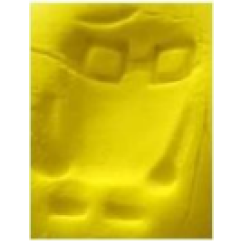Source Institutions
Source Institutions
Add to list Go to activity

In this activity, learners explore how molecules must fit together, like a lock and key, in order to identify each other and initiate a new function as a combined unit. By fitting their hands into uniquely-shaped Play-dough models, learners simulate how receptors recognize each other and stick together based on their distinctive three-dimensional forms. This activity includes an optional extension, in which learners match objects to impressions of the objects in play-dough. Use this activity to introduce concepts related to nanotechnology, self-assembly, antigens, and antibodies. [Activity is publicly available through a web crawler capture on Archive.org.]
- Under 5 minutes
- 45 to 60 minutes
- $1 - $5 per group of students
- Ages 8 - 11
- Activity, Lesson/Lesson Plan, Model
- English
Quick Guide
Materials List (per group of students)
- Play Dough or Sculpey clay
- Rolling pins
- Small, opaque bags with small items that have unique and distinctive shapes
Subjects
-
Engineering and Technology
-
Engineering
- Nanotechnology
-
Engineering
-
Life Sciences
-
Cells
- Cell Structure and Function
-
Human Body
- Immune System
-
Cells
-
Physical Sciences
- Chemistry
Informal Categories
- Toys
Audience
To use this activity, learners need to:
- see
- touch
Learning styles supported:
- Involves hands-on or lab activities
Other
Components that are part of this resource:
Includes alignment to state and/or national standards:
Access Rights:
- Free access
By:
Rights:
- All rights reserved, Arizona Science Center, 2012
Funding Source:
- Science Education Partnership Award, National Institutes of Health
